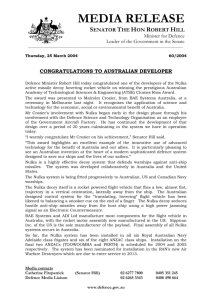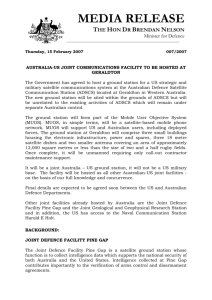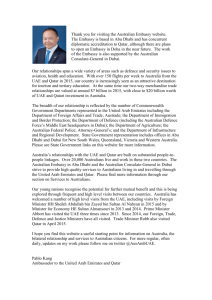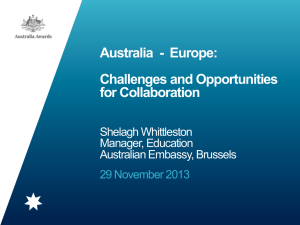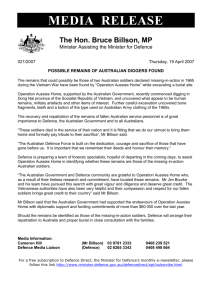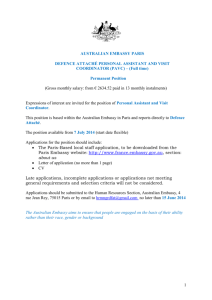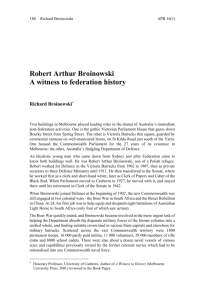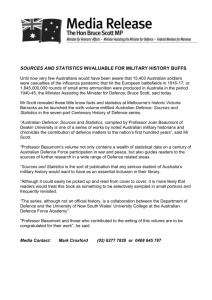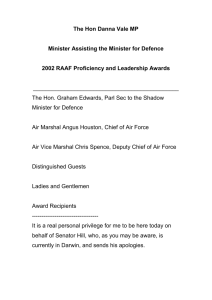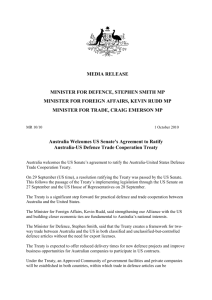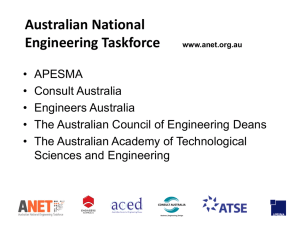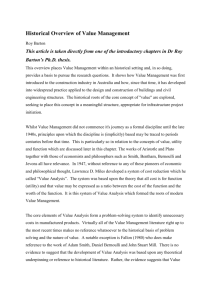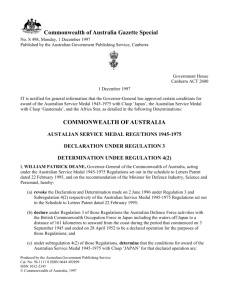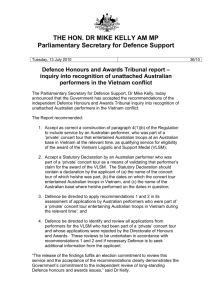Tim Runge, C & I Projects Inc.
advertisement
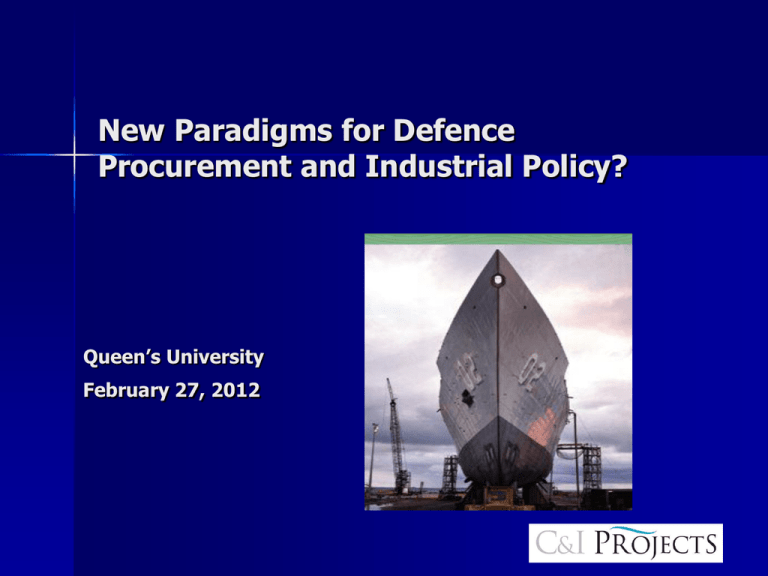
New Paradigms for Defence Procurement and Industrial Policy? Queen’s University February 27, 2012 The C&I Group Boutique corporate advisory firm – offset and economic development programs Lawyers Defence Industry specialists Fifty eight year pedigree (1954) Total staff of approx 50 Offices Australia, India & Canada C&I Group Services Specialist advice on: – Offsets (IRBs) (TRACE vetted) – Global business deals – JV and relationship structuring – Intellectual property commercialisation – Defence & IP contract negotiation – with primes, Government and sub-suppliers – Socio-Economic Development Programs as a means to leverage business Questions What percentages of payloads (arctic ships and then frigates) do we expect to be produced in Canada? What would be the spatial (regional) distribution of that work? What is our assessment of the role of Industry Canada in coordination? Are we competitors to IC? What is my assessment of Industry Canada approvals of CCVs? Market/Economic Forces CCV and Regional distribution determined by the main contractor on a cost/risk economic basis. Role of IC or an IRB policy is to try and influence that decision making in a way that meets policy objectives but does not distort the economic rationalism of the contractors business and pricing. Market/Economic Forces If Canadian shipyards/suppliers are price and quality competitive work should flow to them. – Supply Chains tend to be sticky Is a lower “off shore” solution available? As a “nation” how do we want to drive industry policy, to what value of a procurement and where should it be located. Australian LHD Ship Aus Govt did not mandate where ships were to be built French and Spanish looked at primarily offshore build media expectation that Spanish would build wholly offshore meant the potential closure of a major shipyard French proposed most of the build in Australia at various yards Australian LHD Ship Spanish won with compromise solution meeting two objectives – hulls built in Spain, up to the flight deck – Australia yard will build the superstructure – all the technology smarts and the critical systems integration will also happen in Australia Australian LHD Ship In terms of total tonnage possibly only 20% built in Australia but in terms of contract value which included the hi-tech jobs, the percentages are reversed, i.e. 80%. Australian Air Warfare Destroyer Australian government mandated the government owned ASC shipyard must build the ships A Navantia design selected – much of the design and engineering work is being done in Spain – tonnage built will all be in Australia ASC on a deployed module build program sharing the modules around a number shipyards, including quite small ones. Australian Air Warfare Destroyer Modules consolidated in Adelaide A number of yards “heads above water” for a little longer. Industry policy certainly does drive outcomes Major Platforms Mission System (ears, eyes and brains of the vessel) – Mission Computer, Displays and Systems Integration – Sensors – Radar – EW – Acoustics – EO/IR – Communications – Weapons – Torpedoes – Guns Who can do it here? Lockheed Martin Canada GD Canada Ultra Marine and Electronics MDA Raytheon DRS As well as numerous capable tech savy suppliers in areas such as display across the country But can we do it here? Plenty of capable talent Do we offer the right risk reward compared to offshore? Are we competitive on price? Are the major suppliers prepared to contract with Canadian companies? IRB Policy –does it encourage? Direct IRBs – Global Value Chains Mandate high levels of Direct? – Direct has many different quality levels Defence only IRBs? Other incentives to promote FULL participation of Canadians companies in Canadian defence procurement and global sales? Questions –”answered” What percentages of payloads (arctic ships and then frigates) do we expect to be produced in Canada? – 35%-40% Questions-”answered” What would be the spatial (regional) distribution of that work? – – – – Atlantic Canada Quebec Ontario Western Canada 20% 35% 25% 20% Questions-”answered” What is our assessment of the role of Industry Canada in coordination? Are we competitors to IC? – We do not consider ourselves competitors, but are we collaborators? Questions –”answered” What is my assessment of Industry Canada approvals of Canadian Content Value? www.ciprojectsgroup.com trunge@cipgrp.com 20 Douglas St. Guelph, Ontario Tel: 519 763 6181

